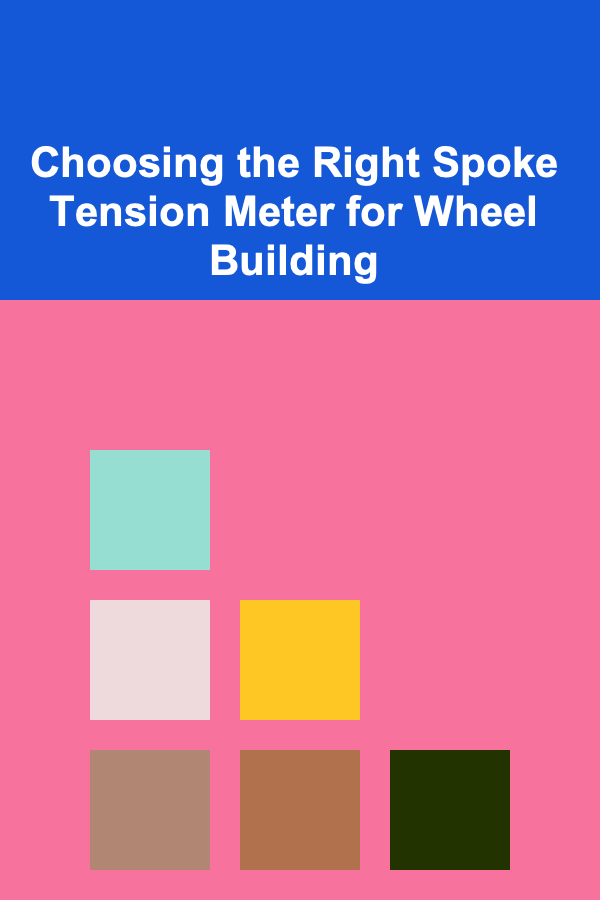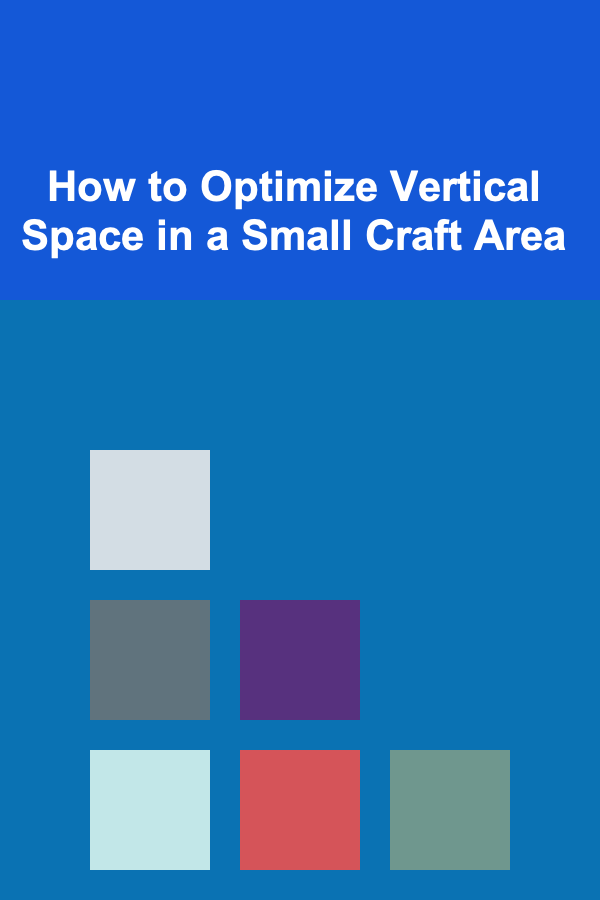
Choosing the Right Spoke Tension Meter for Wheel Building
ebook include PDF & Audio bundle (Micro Guide)
$12.99$8.99
Limited Time Offer! Order within the next:

Wheel building is an art and a science, demanding precision and patience. One of the most critical aspects of building a durable and reliable wheel is achieving the correct and even spoke tension. While experienced wheel builders might develop a feel for tension over time, a spoke tension meter is an indispensable tool for both beginners and professionals alike. It allows for accurate and repeatable measurements, ensuring optimal wheel performance. However, with various models available on the market, choosing the right spoke tension meter can be daunting. This comprehensive guide will delve into the factors to consider when selecting a spoke tension meter, empowering you to make an informed decision that suits your specific needs and budget.
Understanding Spoke Tension and Its Importance
Before diving into the selection process, it's crucial to understand the concept of spoke tension and why it matters.
Spoke tension refers to the force applied to each spoke, pulling it tight between the hub and the rim. Properly tensioned spokes are essential for the following reasons:
- Wheel Strength and Durability: Even spoke tension distributes the load evenly across all spokes, preventing any single spoke from bearing excessive stress. This dramatically increases the wheel's overall strength and resistance to damage from impacts and road vibrations. Uneven tension can lead to spoke fatigue and eventual failure.
- Wheel Trueness and Stability: Correct tension contributes significantly to maintaining the wheel's trueness (straightness) and roundness. When spokes are evenly tensioned, the rim is pulled into a stable, circular shape. Incorrect tension can cause the wheel to wobble laterally or vertically, affecting handling and ride quality.
- Power Transfer Efficiency: A properly tensioned wheel transfers pedaling power more efficiently. Loose spokes absorb energy, reducing the responsiveness of the wheel. Tight spokes create a more rigid structure, allowing for direct power transmission to the road.
- Rider Comfort: While often overlooked, spoke tension plays a role in rider comfort. By damping vibrations and absorbing impacts, properly tensioned spokes contribute to a smoother and more enjoyable ride.
In essence, accurate and even spoke tension is the foundation of a strong, reliable, and comfortable wheel. A tension meter is the key to achieving this, taking the guesswork out of the wheel building process.
Types of Spoke Tension Meters
Spoke tension meters come in various designs, each with its own advantages and disadvantages. Understanding the different types is the first step in choosing the right one for your needs.
1. Beam-Type Tension Meters
Description: Beam-type tension meters are the most common and widely used type. They typically consist of a calibrated beam, a fixed anvil, and a movable arm that presses against the spoke. The deflection of the beam is measured by a gauge, which translates the deflection into a tension reading.
How They Work: The user positions the meter over the spoke, ensuring the anvil and arm are properly aligned. Applying pressure to the spoke causes the beam to deflect. The amount of deflection is directly proportional to the spoke tension. The gauge displays the corresponding tension value, usually in kilograms-force (kgf) or Newtons (N).
Pros:
- Relatively Affordable: Beam-type tension meters are generally the most budget-friendly option, making them accessible to hobbyists and beginners.
- Simple to Use: The operation is straightforward and easy to learn, requiring minimal technical expertise.
- Durable: With proper care, beam-type meters can last for many years. They are generally robust and resistant to damage from accidental drops.
- Widely Available: A vast selection of beam-type meters is available from various manufacturers, offering a range of price points and features.
Cons:
- Accuracy Can Vary: The accuracy of beam-type meters can be influenced by factors such as calibration, user technique, and the specific spoke being measured. Consistent technique is essential for reliable readings.
- Analog Readings: The reliance on an analog gauge can sometimes make it difficult to obtain precise readings, especially for users with visual impairments or in low-light conditions.
- Calibration is Crucial: Regular calibration is essential to maintain accuracy. Many beam-type meters require manual calibration, which can be time-consuming and require specialized tools.
Popular Examples: Park Tool TM-1, DT Swiss Tensio 2
2. Digital Tension Meters
Description: Digital tension meters utilize electronic sensors to measure spoke tension. They typically feature a digital display that provides a clear and precise tension reading.
How They Work: Similar to beam-type meters, digital meters are positioned over the spoke. However, instead of measuring beam deflection, they use strain gauges or other electronic sensors to detect the force applied to the spoke. The sensor output is then converted into a digital reading displayed on the screen.
Pros:
- High Accuracy: Digital meters generally offer higher accuracy compared to beam-type meters, minimizing the potential for user error.
- Precise Readings: The digital display provides clear and unambiguous readings, eliminating the need for interpolation or estimation.
- Ease of Use: Digital meters are often easier to use, especially for beginners, due to their straightforward operation and clear display.
- Data Logging Capabilities (Some Models): Some advanced digital meters offer data logging features, allowing you to record tension measurements and track progress. This can be particularly useful for complex wheel builds or for comparing tension data over time.
Cons:
- Higher Cost: Digital tension meters are generally more expensive than beam-type meters.
- Battery Dependence: Digital meters require batteries to operate. Battery life can vary depending on the model and usage.
- Potentially Less Durable: The electronic components in digital meters may be more susceptible to damage from impacts or moisture compared to the simpler mechanics of beam-type meters.
- May Require More Frequent Calibration: Although digital meters are typically more accurate, they might require more frequent calibration to maintain optimal performance. Calibration procedures can sometimes be complex.
Popular Examples: Wheelsmith Digital Spoke Tension Meter
3. Ultrasonic Tension Meters
Description: Ultrasonic tension meters are a relatively newer and more advanced type of tension meter. They use ultrasonic waves to measure spoke tension without physically contacting the spoke.
How They Work: The meter emits an ultrasonic pulse towards the spoke. The time it takes for the pulse to travel to the spoke and return is measured. This time is directly related to the spoke tension, as tighter spokes will vibrate at a higher frequency. The meter then calculates and displays the tension reading.
Pros:
- Non-Contact Measurement: Eliminates the potential for scratching or damaging the spoke surface.
- Highly Accurate: Offers very high accuracy and repeatability.
- Fast Measurement: Provides quick tension readings.
- Suitable for Different Spoke Types and Shapes: Less sensitive to spoke diameter and shape compared to other types of meters.
Cons:
- Highest Cost: Ultrasonic tension meters are the most expensive option.
- Complex Operation: May require more training and understanding to operate effectively.
- Sensitivity to Environmental Factors: Can be affected by temperature, humidity, and other environmental conditions.
- Less Common: Fewer models are available on the market, and finding technical support or replacement parts may be challenging.
Examples: These are less common in the consumer market and typically used in professional wheel building environments or research settings.
Factors to Consider When Choosing a Spoke Tension Meter
After understanding the different types of spoke tension meters, you need to consider several factors to make the best choice for your individual needs and circumstances. These factors include budget, accuracy requirements, ease of use, durability, calibration needs, and spoke compatibility.
1. Budget
Your budget is likely the most significant factor influencing your decision. Spoke tension meters range in price from relatively inexpensive beam-type models to high-end digital and ultrasonic options. Consider how frequently you plan to use the meter and the level of accuracy you require. For occasional wheel building or maintenance, a basic beam-type meter may suffice. For professional wheel builders or those who demand the highest accuracy, a digital or ultrasonic meter may be a worthwhile investment.
Remember to factor in the cost of calibration tools and services when considering your budget. Some meters require specialized calibration equipment, which can add to the overall expense.
2. Accuracy Requirements
The level of accuracy required depends on the type of wheels you are building and the demands you place on them. For recreational cycling or commuting, a moderately accurate meter may be sufficient. However, for high-performance road cycling, mountain biking, or racing, where wheel reliability and performance are paramount, a more accurate meter is essential.
Consider the acceptable tolerance range for spoke tension in your wheel builds. A meter with a higher level of accuracy will allow you to achieve tighter tolerances and ensure optimal wheel performance. Look for meters that have been independently tested and calibrated to ensure their accuracy.
3. Ease of Use
The ease of use is an important consideration, especially for beginners. A meter that is simple to operate and provides clear readings will make the wheel building process more enjoyable and less prone to errors.
Look for meters with ergonomic designs that are comfortable to hold and operate. The gauge or display should be easy to read, even in low-light conditions. Consider meters that come with clear instructions and helpful resources, such as videos or online tutorials.
4. Durability
The durability of the tension meter is crucial, especially if you plan to use it frequently or in a workshop environment. Choose a meter that is made from high-quality materials and is designed to withstand the rigors of regular use.
Look for meters with robust housings and protective features, such as rubber bumpers or reinforced components. Consider meters that come with a protective case to prevent damage during storage and transport.
5. Calibration Needs
All spoke tension meters require periodic calibration to maintain their accuracy. The frequency of calibration depends on the type of meter and the frequency of use. Beam-type meters typically require more frequent calibration than digital or ultrasonic meters.
Consider the ease of calibration when choosing a meter. Some meters can be calibrated manually using simple tools, while others require specialized equipment or professional calibration services. Factor in the cost and time required for calibration when making your decision.
6. Spoke Compatibility
Ensure that the tension meter you choose is compatible with the types of spokes you plan to use. Different meters have different measurement ranges and may not be suitable for all spoke diameters and materials.
Check the manufacturer's specifications to ensure that the meter is compatible with the spokes you intend to use. If you plan to use a variety of different spoke types, choose a meter that has a wide measurement range and is easily adjustable.
Specific Considerations for Different Types of Wheel Building
The type of wheel building you're doing will also influence your choice of tension meter. Here are some specific considerations:
Road Bike Wheels
Road bike wheels require high levels of precision and accuracy due to the high speeds and demanding conditions they are subjected to. A digital tension meter is generally recommended for road bike wheel building, as it provides the accuracy needed to achieve optimal performance and reliability. Consider a model with data logging capabilities if you're building multiple wheels and want to track your progress and consistency.
Mountain Bike Wheels
Mountain bike wheels need to be exceptionally strong and durable to withstand the impacts and stresses of off-road riding. A robust beam-type or digital tension meter can be suitable. Focus on durability and ease of use, as you might be making adjustments in less-than-ideal conditions. The ability to accurately measure tension on thicker, more robust spokes is important.
E-Bike Wheels
E-bike wheels are subjected to higher loads and stresses than traditional bike wheels due to the added weight and power of the motor. Therefore, a high level of accuracy and durability is essential. A digital tension meter is recommended for e-bike wheel building, as it provides the precision needed to ensure that the wheels are strong and reliable enough to handle the increased demands.
Custom Wheel Building
If you are building custom wheels for a variety of different bikes and riding styles, a versatile and accurate tension meter is essential. A digital tension meter with a wide measurement range and data logging capabilities is a good choice, as it allows you to track tension measurements and ensure consistency across different wheel builds.
Tips for Using a Spoke Tension Meter Effectively
Once you have chosen the right spoke tension meter, it's crucial to use it correctly to ensure accurate and reliable measurements. Here are some tips for using a spoke tension meter effectively:
- Calibrate the meter regularly: Follow the manufacturer's instructions for calibrating the meter. Regular calibration is essential to maintain accuracy.
- Use consistent technique: Ensure that you are using the same technique each time you measure spoke tension. This will help to minimize errors and ensure consistency.
- Position the meter correctly: Position the meter properly over the spoke, ensuring that the anvil and arm are aligned correctly.
- Apply consistent pressure: Apply consistent pressure to the spoke when taking measurements. Avoid applying excessive force, as this can damage the meter.
- Take multiple readings: Take multiple readings for each spoke and average them to minimize the impact of any individual errors.
- Consider spoke diameter and material: Remember to account for the spoke diameter and material when interpreting the tension readings. Different spokes require different tension values. Use a spoke tension chart or consult with a wheel building expert to determine the appropriate tension values for your spokes.
- Keep the meter clean and well-maintained: Clean the meter regularly to remove any dirt or debris that could affect its accuracy. Store the meter in a protective case when not in use.
Conclusion
Choosing the right spoke tension meter is a critical step in building strong, reliable, and high-performing wheels. By considering the factors outlined in this guide, including budget, accuracy requirements, ease of use, durability, calibration needs, and spoke compatibility, you can make an informed decision that suits your specific needs and budget.
Remember to prioritize accuracy and reliability, especially if you are building wheels for high-performance applications. Invest in a quality tension meter and learn how to use it effectively. With the right tools and techniques, you can build wheels that will provide years of reliable performance and enjoyment.
Ultimately, the best spoke tension meter is the one that you find comfortable to use, accurate for your needs, and that you can rely on to deliver consistent results. Happy wheel building!

How to Create a Family Recipe Binder for Easy Cooking
Read More
How to Create a Sustainable Outdoor Space
Read More
How to Make Budgeting Fun and Engaging
Read More
How to Optimize Vertical Space in a Small Craft Area
Read More
How to Use AI for Predictive Analytics
Read More
How To Research the Future of Solid-State Batteries
Read MoreOther Products

How to Create a Family Recipe Binder for Easy Cooking
Read More
How to Create a Sustainable Outdoor Space
Read More
How to Make Budgeting Fun and Engaging
Read More
How to Optimize Vertical Space in a Small Craft Area
Read More
How to Use AI for Predictive Analytics
Read More